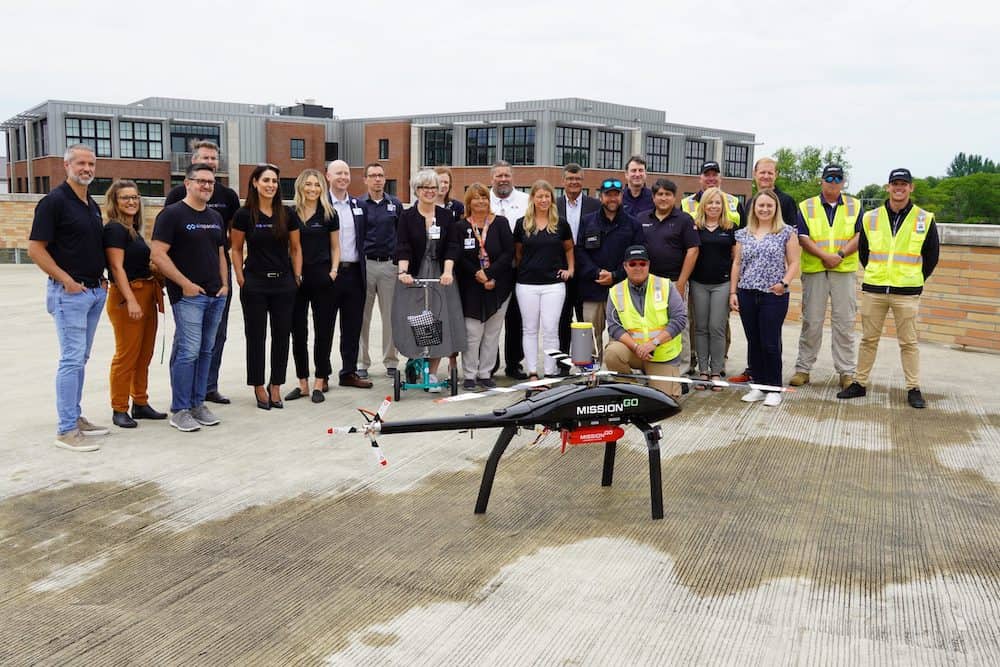



MissionGO Unmanned Systems and UAS technology and infrastructure company Airspace Link teamed up for Michigan’s first real-world cargo delivery operations via Unmanned Aerial System (UAS).
Working in collaboration with Beaumont Health Spectrum Health (BHSH), Michigan Economic Development Corporation (MEDC), NextEnergy, and metropolitan Detroit community leaders, MissionGO and Airspace Link completed a successful 10-day flight operation showcasing a real-world UAS transportation program in Southeast Michigan.
Flight operations occurred at Taylor Medical Center, simulating UAS synergies at a hospital center, and across a one-mile stretch of railroad tracks between Beaumont Wellness Center and the Big Rock Parking Deck.
The second location showcased real-world viable UAS transport through multiple deliveries each day of operations and also was used to compare several agents against ground transport such as time, carbon emissions, damage to contents, etc. The results of this study will be released at a later date.
“This 10-day operation was just Phase I of what is promising to be an incredibly innovative future for Southeast Michigan and for UAS cargo deliveries as a whole,” said Scott Plank, Co-Founder and Executive Chairman of MissionGO. “The opportunity to directly compare the effects of ground transport to an all-electric UAS transport will certainly open up the conversation on how UAS can be used to improve the environment, as well as the local economy.”
The cargo for these flight operations included blood samples, containers of water, and food packages.
“A core value of MissionGO is safety,” said Chris Corgnati, President of MissionGO. “If we can fly a human organ and medical supply samples safely, we can easily fly a pizza delivery. The success of these flights proves the viability of many types of UAS delivery within a densely-populated urban area.”
In compliance with the Federal Aviation Administration (FAA) regulations, flights were not conducted over non-crew members and the aircraft was kept within Visual Line Of Sight (VLOS) at all times. The UAS used during these operations was the MGV100 – a sub-55 pound all-electric single rotor helicopter going through Type, Production, and Part 135 Certification with the FAA. At the completion of these certifications, the MGV100 aircraft will be cleared by the FAA to operate over populated areas and eventually eligible for flying Beyond Visual Line Of Sight (BVLOS).
“As an FAA approved USS (UAS Service Supplier) it’s our role to support the industry and companies like MissionGO with the technology, data, and services they need to safely conduct their missions,” said Michael Healander, Co-Founder & CEO of Airspace Link. “Our AirHub platform is fully integrated with the FAA and State and Local Government agencies to provide the most up to date, authoritative data to pilots to increase situational awareness on the ground and in the air.”





Related Posts
New Drone Fires Thales Missile in Unmanned Air Combat Milestone
UAS Startup Accelerator Awards 3M in Funding
US Navy Orders Unmanned Tactical Resupply Aircraft